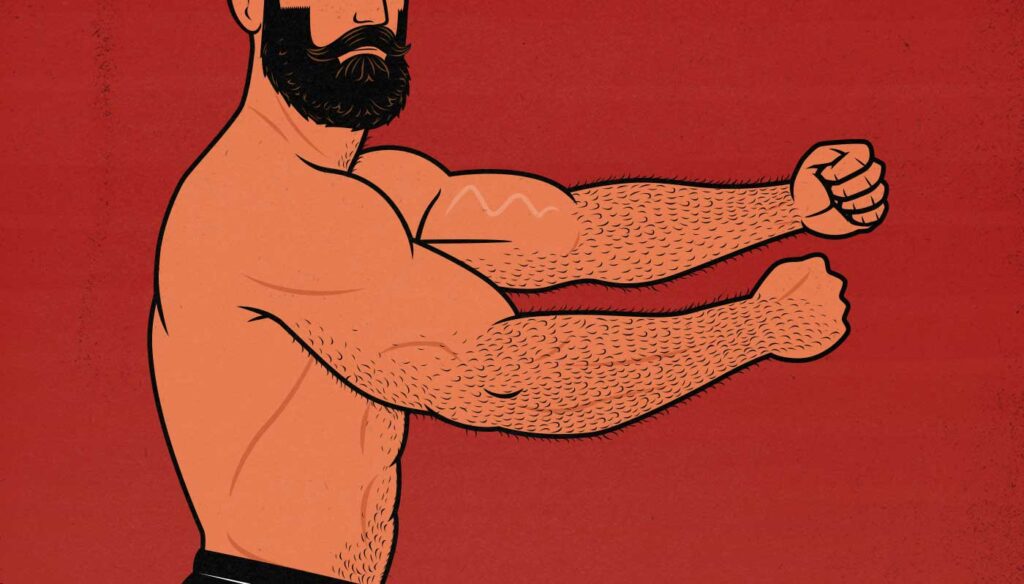
How to Build Bigger Triceps
There’s an old bodybuilding adage that your biceps are responsible for 33% of your arm size, your triceps for 67%. And, believe it or not, if we look at studies (like this one) measuring muscle size, we see that the average man’s triceps are indeed twice as big as his biceps. Building bigger triceps is indeed the best way to build bigger arms.
There’s an old strength training adage, though, telling us that all we need to build bigger triceps is to get stronger at the bench press and overhead press. That’s not the case, and perhaps that’s why most people’s triceps lag behind their biceps. They don’t train them directly enough, hard enough, or often enough.
So, what’s the best way to build bigger triceps?
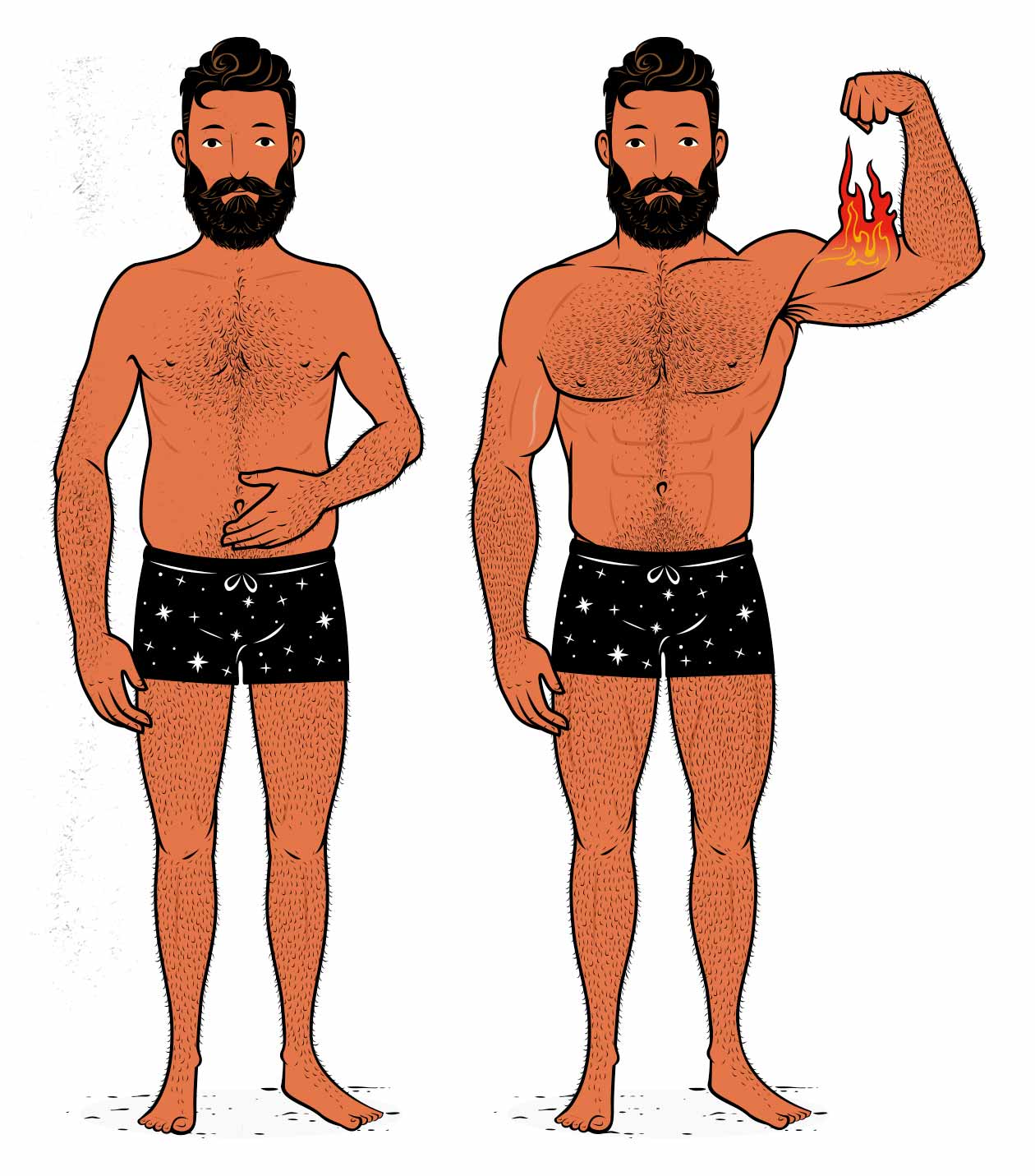
What Are Triceps?
The triceps, short for triceps brachii, are the muscles that run along the backside of your arms. The reason they’re called triceps is that they have three heads: the medial head, lateral head, and long head. They’re big muscles, too—about twice the size of your biceps.
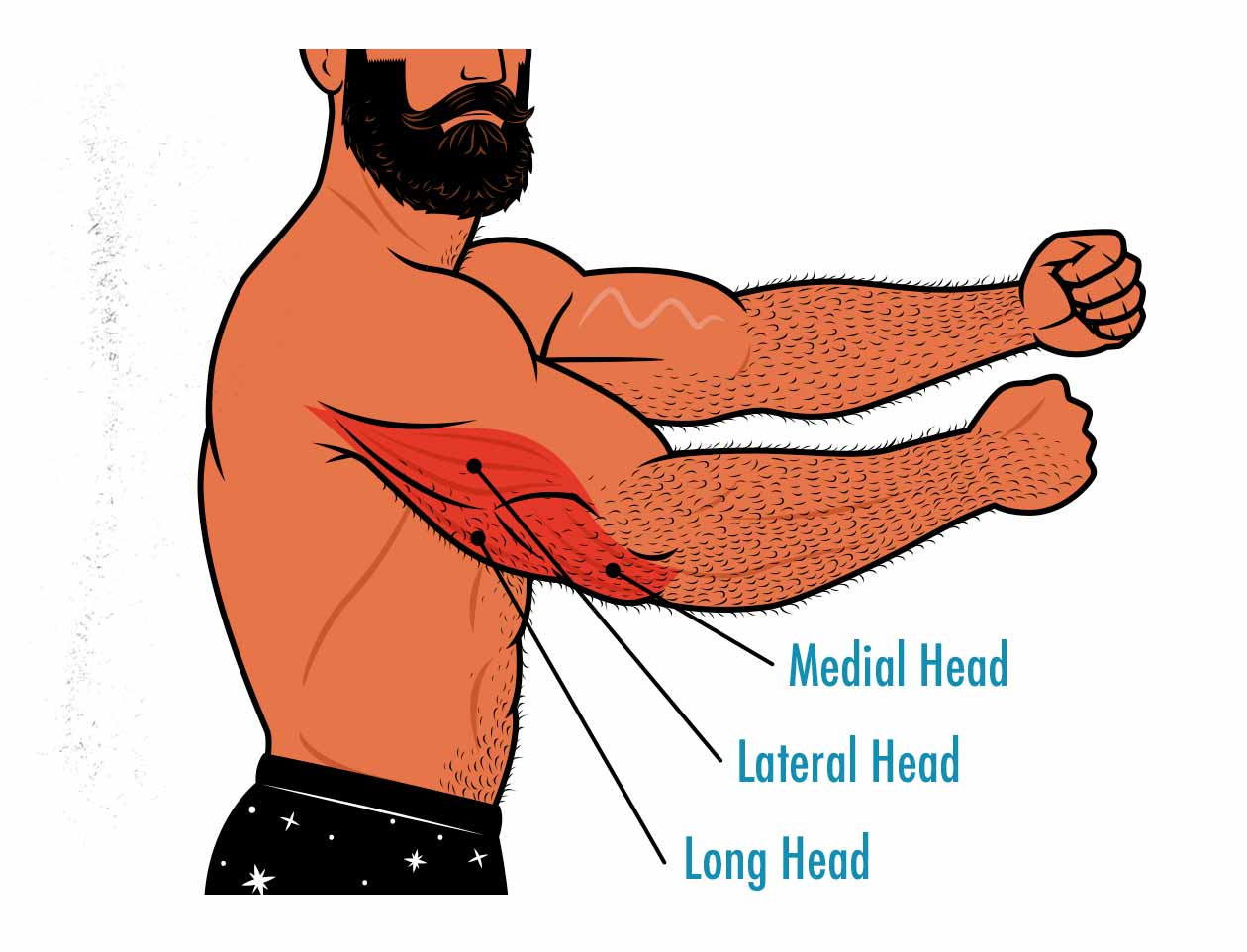
The main function of the triceps is to lock out your elbows (elbow extension). Think of triceps extensions and skullcrushers. These exercises train elbow extension. But the long heads of your triceps can also pull your elbows back (shoulder extension). Think of pullovers. The problem is, pressing movements, such as the bench press and push-up, involve elbow extension and shoulder flexion. This can interfere with your ability to bulk up the long heads of your triceps.
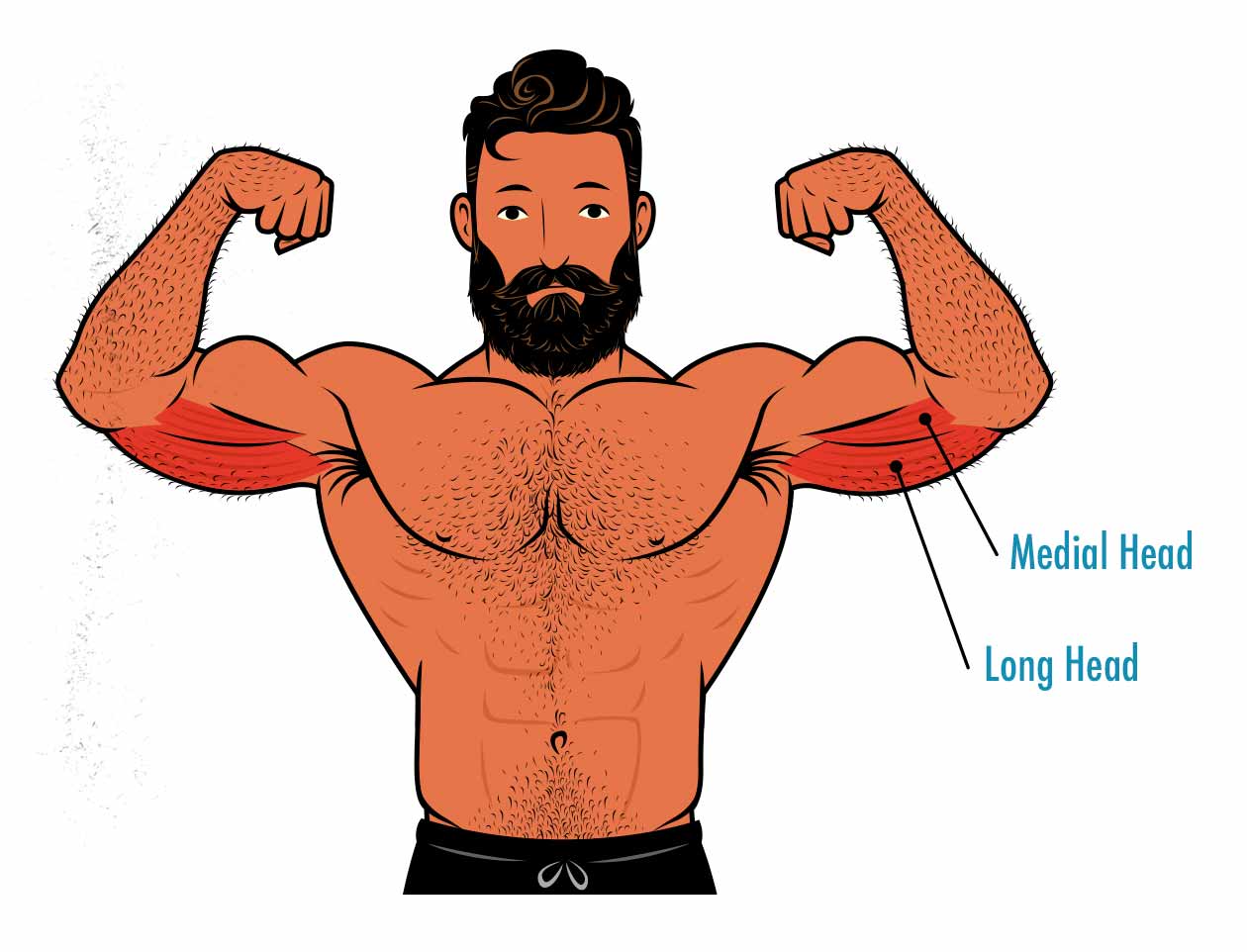
The long head is quite large, too, and has a big impact on the appearance of your upper arms, especially when viewed from the front. So, let’s talk about how to train your triceps in a way that develops all three heads.
How to Train Your Triceps
There’s a popular myth that if you focus on the big compound lifts, all of your muscles will grow. It’s true that the compound lifts engage more overall muscle mass and stimulate more total muscle growth, but your muscles are quite versatile. They’re designed to do more than one thing. Your triceps can assist with pressing (by extending your elbows) but they can also interfere with it (by extending your shoulders). If all you do is train compound pressing movements, you won’t be fully engaging your triceps, training them under a full stretch, or giving them a full contraction. As a result, they’ll lag behind (study).
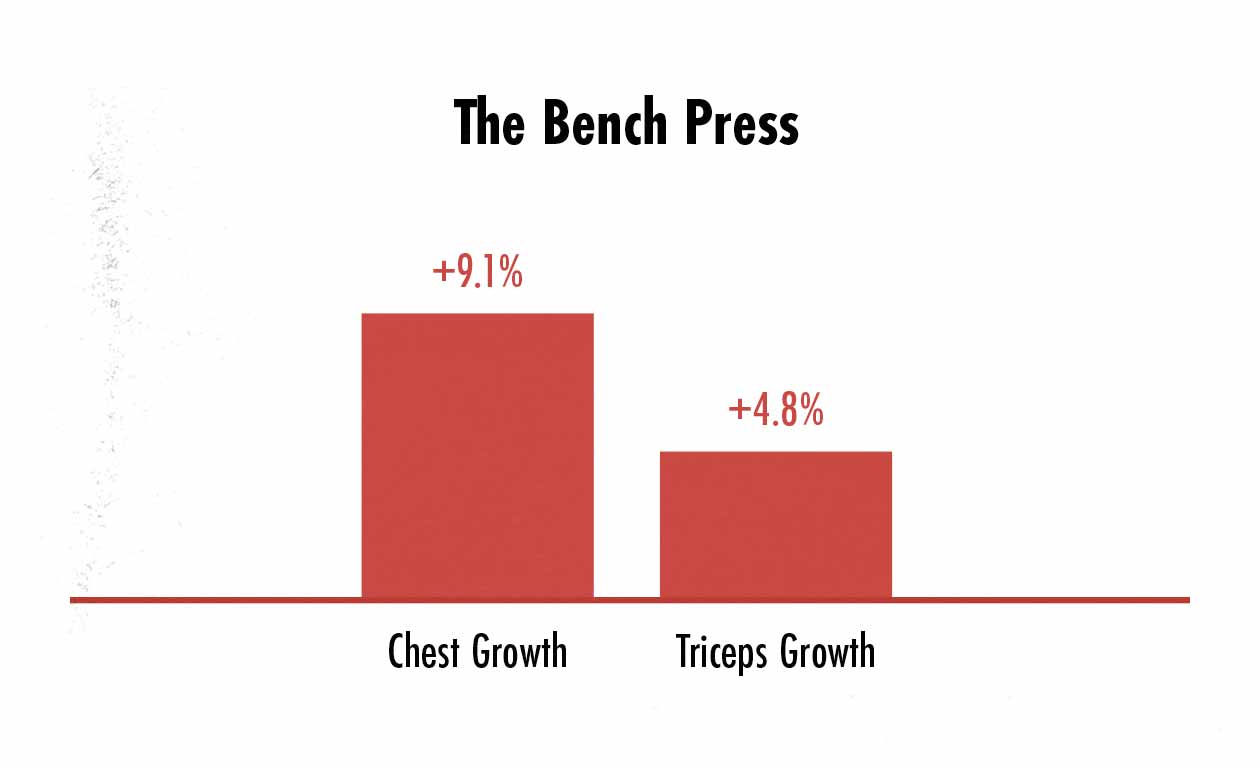
With minimalist programs, the idea is that if you do the bench press (elbow extension), overhead press (elbow extension), and bent-over barbell rows (shoulder extension), your triceps will get all the stimulation they need to grow. But that’s not quite right. The lateral and medial heads of your triceps help you lock out your arms during the bench press. But the long head pulls your elbows back, interfering with your ability to press the weight up. And so, to avoid interfering with the pressing movement, your triceps won’t fully engage. The opposite is true with the barbell row, where your triceps assist with shoulder extension but interfere with elbow flexion.
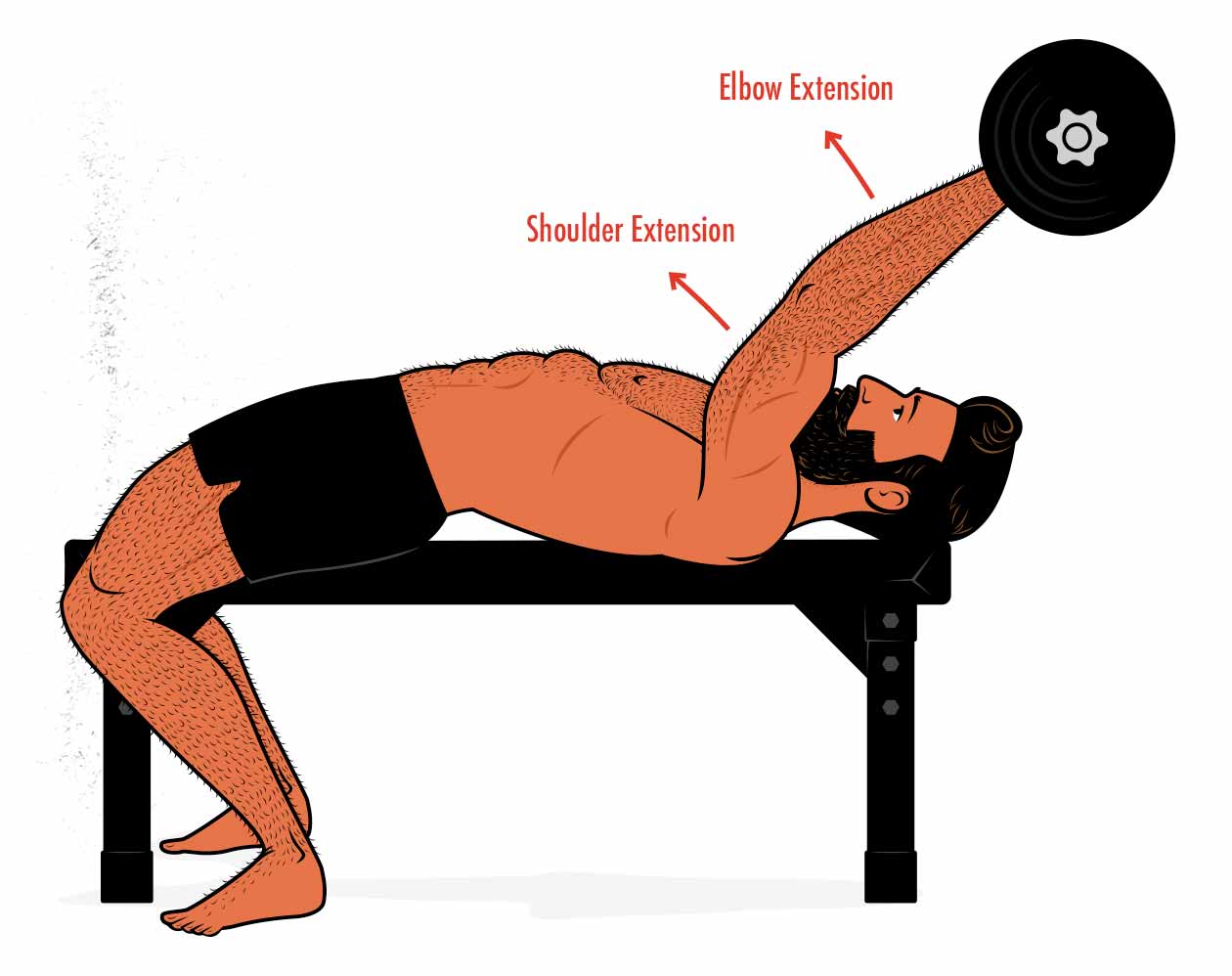
That’s where triceps extensions come in. You’re fighting to lock out your elbows (elbow extension) while simultaneously fighting to keep your elbows from drifting back (shoulder extension). You’re training both functions of your triceps at the same time. As a result, they fully engage, and so they grow much bigger:
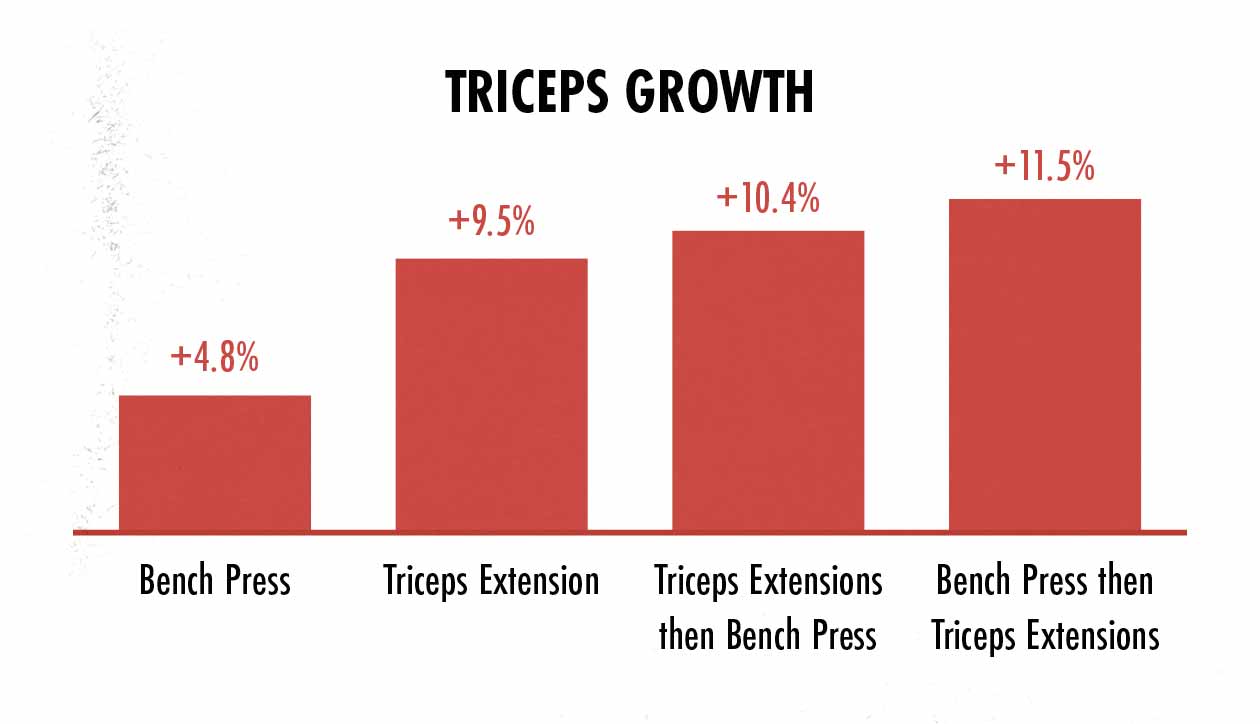
So this all to say that pressing movements are a good start to building bigger triceps. They’ll engage the lateral and medial heads of your triceps. Even the long head will get a bit of work. But after you finish your pressing movements, it can really help to add in some triceps extensions. That way you can train your triceps fully.
The good news is, you don’t always need to be train your triceps rigorously. Pressing movements are more than enough to maintain your triceps strength, and are usually enough to make some slow progress. If you spend a few months doing triceps extensions to build bigger arms, you can abandon them later without any worry of them shrinking. You can spend most of your life doing minimalist routines focused on the big compound lifts. All we’re saying is that if you want to build bigger triceps, it can pay to add triceps extension to your routine, at least for a few months.
The Best Triceps Exercises
As we covered in the previous section, pressing movements engage the lateral and medial heads of our triceps. The bench press does a great job of that, especially if you use a narrower grip. The overhead press is good, too. And so are push-ups and dips.
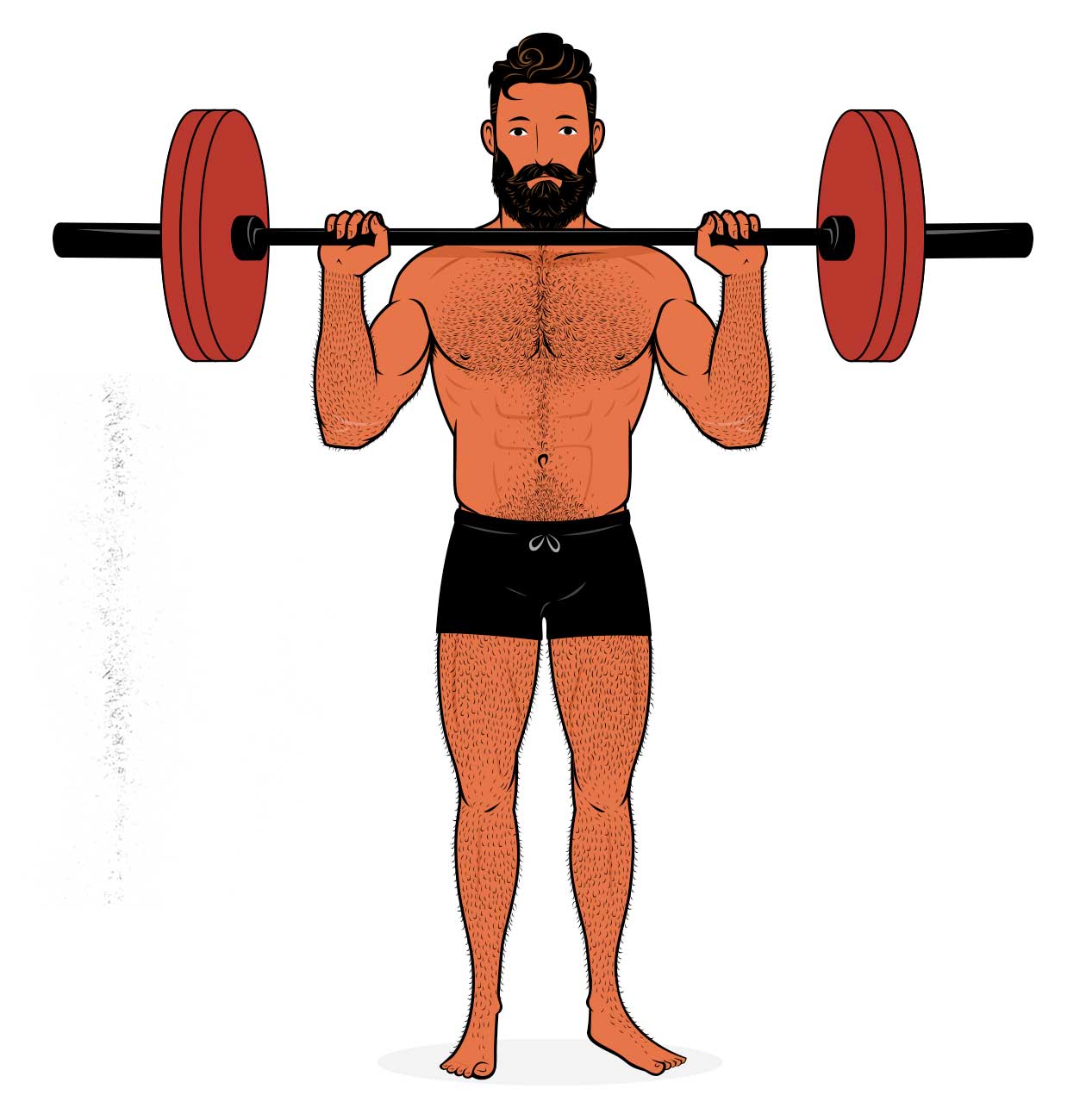
When choosing our triceps isolation exercises, then, we want to choose variations that are great for bulking up the long heads of our triceps. There are a few factors to consider:
- Are your triceps the limiting factor? The most important part of building muscle is making sure that you’re training your muscles hard enough. That means choosing lifts that allow you to bring your target muscles close enough to failure. For example, most people are limited by their chest strength on the bench press, which isn’t ideal for building bigger triceps. But with triceps extensions, the triceps are always the limiting factor.
- Are you training all three heads of your triceps? To do that, we want to choose lifts that emphasize movement at the elbow while either minimizing shoulder flexion or adding a bit of shoulder extension. Again, triceps extensions are perfect for this.
- Are your triceps being challenged at long muscle lengths? One of the most important parts of stimulating muscle growth is choosing lifts that challenge your muscles at longer muscle lengths—under a deep stretch. It’s not something that’s talked about very much, but it can stimulate over twice as much muscle growth per set (meta-analysis). Triceps extensions all stretch our triceps, but some variations are better than others.
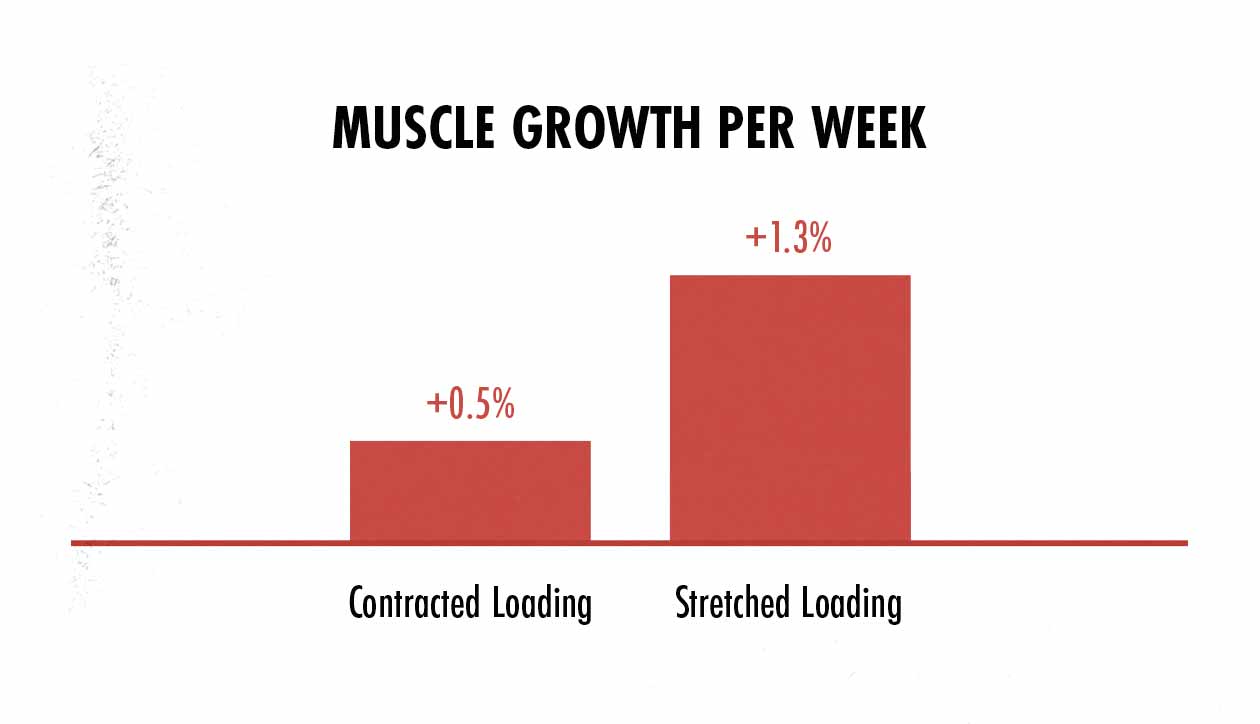
Okay, so, for all three factors, triceps extensions are the best exercise for building bigger triceps. There are three good variations of the triceps extension: triceps pushdowns, skull crushers, and overhead extensions. All of them are great, so let’s talk about the pros and cons of each.
Triceps Pushdowns
Triceps pushdowns, also known as triceps pressdowns, are the simplest type of triceps extension. They don’t require any shoulder mobility whatsoever, making them great for beginners. And they’re very easy on the elbows, making them good for people who get elbow pain from triceps exercises. If you’re new to triceps exercises, pushdowns are a good place to start.
Here’s Marco showing how to do triceps pushdowns:
The downside to pushdowns is that you need a cable stack, meaning that if you train at home, you probably won’t be able to do them. Plus, they put the least amount of stretch on the long head of your triceps, meaning that they won’t stimulate quite as much growth there. That’s why, as you gain more experience, you’ll probably want to switch to skull crushers or overhead extensions.
Skull Crushers
Skull crushers, also known as lying triceps extensions, are the most popular triceps exercise, and with good reason—they’re awesome. Lying on a bench is a sturdy position to work from, allowing you to lift quite a lot of weight. They put a really nice stretch on the long head of your triceps, which is great for stimulating muscle growth. And they can be done with dumbbells, kettlebells, a barbell, or a curl-bar.
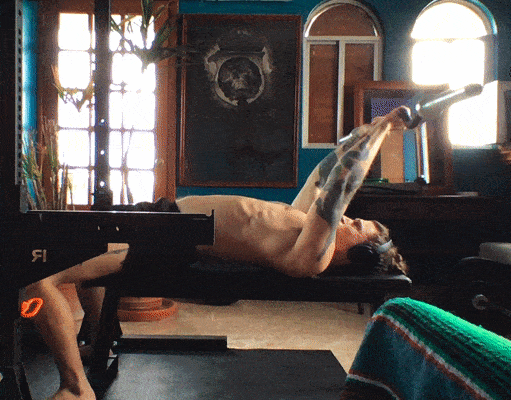
It’s a very simple exercise, very easy to do. Still, there are a few things you can do to make it even more effective.
- Angle your arms backwards: the long heads of your triceps pull your elbows towards your torso. So, as we mentioned earlier, if you start with your arms angled backwards, it puts tension on the long head of your triceps throughout the lift.
- Lower the weight to the bench behind your head: if you lower the weight behind your head, you can get a deep bend at the elbows, putting a really nice stretch on all three heads of your triceps. The reason we recommend lowering it down to the bench instead of stopping in midair is so that you have a consistent range of motion from rep to rep, and from workout to workout. That will make it easier to focus on progressive overload, either adding weight or trying to eke out extra reps every workout.
The downside to skull crushers is that some people find that it can hurt their elbows. We’ll talk about how to fix that below, but always remember that you can use any variation of triceps extension. There’s nothing wrong with doing pushdowns instead.
Overhead Extensions
Overhead triceps extensions are the most advanced type of triceps extension. They require more shoulder and elbow stability, but they also train your triceps at longer muscle lengths, stimulating slightly more muscle growth, especially in the long head, and especially closer to the elbow (study, study).
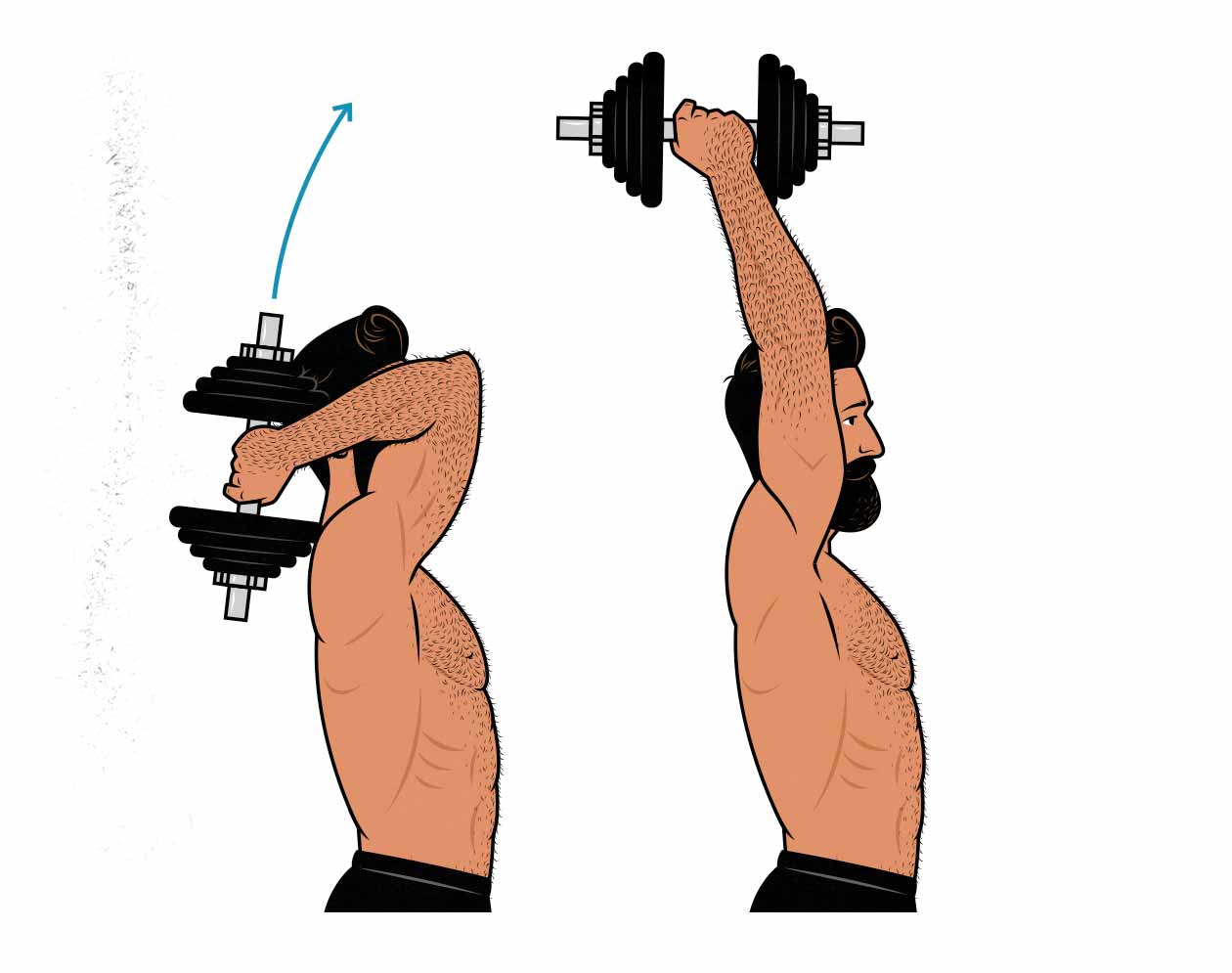
You can do overhead extensions with cables, resistance bands, kettlebells, one dumbbell, two dumbbells, a barbell, or a curl bar. Most people prefer doing them with cables, a single dumbbell, or a curl bar.
Compound Then Isolation Lifts
When trying to build muscle, ideally we want to do our big compound lifts first and then move over to our isolation lifts. That exercise order allows us to invest more of our energy into the lifts that yield more overall size and strength. With our triceps, though, this is especially important. First, doing compound triceps lifts first results in more muscle growth in both the chest and the triceps:

Second, triceps isolation exercises can be a bit hard on the elbows, especially if we’re lifting a ton of weight, and especially if we haven’t warmed up our elbow joints yet. Doing compound lifts first solves both of those problems. They warm up our elbows joints without causing very much elbow stress, and they tire out the shorter heads of our triceps, reducing the amount of weight we can use in our isolation exercises.
How Often Should You Train Your Triceps?
Our muscles grow best when we train them at least twice per week, so what we want to do is choose a few good triceps exercises and spread them out over at least two workouts. For example, if you go to the gym on Monday, Wednesday, and Friday doing full-body workouts, you could spread your triceps training out like this:
- Monday: bench press + skull crushers
- Wednesday: push-ups
- Friday: overhead press + overhead extensions
With this workout routine, you’re training your triceps 3 times per week, and two of those workouts train them quite hard. That’s enough to fully maximize your rate of triceps growth.
How Many Sets Should You Do?
Our muscles grow best when we train them with 3–8 hard sets per workout. Different people respond better to different parts of that range, and it changes over time as your triceps grow bigger, stronger, and tougher. It’s usually best to start with fewer sets and work your way up as needed, like so:
- Adding sets: if your triceps barely feel worked, don’t get much of a pump, hardly get sore, and you’re struggling to gain strength, consider doing more sets.
- Holding steady: if your workouts are giving your triceps a good pump, they feel fatigued at the end, they get a bit sore in the following days, that’s a good sign that you’re doing the right number of sets.
- Removing sets: if your triceps soreness is interfering with your workouts, consider doing fewer sets.
Where this gets tricky is that pressing movements work your triceps, but your triceps aren’t always the limiting factor, they aren’t always trained with a deep stretch, and only 2 of the 3 heads can engage properly. Doing five sets of the dumbbell bench press might not be enough to stimulate any triceps growth at all, whereas doing 5 sets of skull crushers might be too much, causing an excessive amount of damage to your triceps.
What we recommend is starting your workouts with a few sets of pressing movements, then doing some triceps extensions afterwards. Make sure that you’re doing triceps extensions for at least 2–3 sets per workout and that you’re doing them at least twice per week. Combined with your pressing work, that will be enough to maximize your triceps growth.
How Many Reps Should You Do?
We can build muscle fairly well with anywhere from 4–40 repetitions per set, but we get even more growth when we do 6–20 reps per set (meta-analysis). There’s a bit of nuance to it, though. Our big compound lifts benefit from being heavier so that our cardiovascular systems don’t limit us. And our isolation lifts benefit from being lighter so that our joints don’t limit us.
Here are the best rep ranges for the popular triceps exercises:
- Bench press: 5–15 reps per set.
- Overhead press: 6–12 reps per set.
- Close-grip bench press: 8–15 reps per set
- Dumbbell bench press: 8–15 reps per set.
- Dips: 8–15 reps per set.
- Skull crushers: 10–20 reps per set.
- Overhead extensions: 10–20 reps per set.
- Triceps pushdowns: 10–20 reps per set.
- Push-ups: 10–30 reps per set.
Sample Triceps Workouts
To build a triceps workout, you’ll want to start by choosing a big compound pressing movement. That way you can start stimulating some triceps growth, warm up your triceps, and start your workout by building muscle in your chest and shoulders.
- The close-grip bench press
- The overhead press
- Push-ups
- Dips
When choosing your compound lifts, keep in mind that a narrower grip tends to mean emphasizing your triceps and working them through a harder range of motion. So if you’re really keen on building bigger triceps, think of lifts like the close-grip bench press and a moderate-grip overhead press.
Also keep in mind that using a barbell increases triceps activation. So it’s better to do a barbell bench press than a dumbbell bench press, better to do a barbell press than a dumbbell press. If you don’t have access to a barbell, though, push-ups are just as good.
And the best isolation lifts are:
- Overhead triceps extensions
- Skullcrushers
- Triceps pushdowns
All of these exercises are similarly effective, and all of them work your triceps incredibly hard. Feel free to choose them based on personal preference, and, ideally, switch to a different variation every couple months.
That gives us a few great triceps workouts:
Barbell Triceps Workout
If you’re using a barbell, your compound lifts will work the lateral and medial heads of your triceps quite hard, making our workouts a little bit more efficient. That means we can spend more of our time on the compound exercises, less time on our triceps isolation exercises.
Monday workout, using the bench:
- Close-grip barbell bench press: 4 sets of 8 repetitions.
- Skull crushers: 3 sets of 15 repetitions.
Friday workout, standing:
- Barbell overhead press: 4 sets of 6 repetitions.
- Overhead extensions: 3 sets of 18 repetitions.
Dumbbell Triceps Workout
If you’re using dumbbells, your compound lifts are still important, and they’ll help help to warm your triceps up. You should still include them in your workouts, and they should still be front and centre. But they won’t stimulate as much triceps growth. As a result, your isolation lifts become even more important. That’s why we’ve removed a set from the compound lifts and added them to the triceps isolation lifts.
The next thing to keep in mind is that it’s a bit harder to use heavier rep ranges with dumbbells. That’s why we’ve bumped up the rep ranges a little bit. And as a bonus, that will keep things easier on your joints.
Monday workout, using the bench:
- Dumbbell bench press: 3 sets of 10 repetitions.
- Dumbbell skull crushers: 4 sets of 18 repetitions.
Friday workout, standing:
- Dumbbell overhead press: 3 sets of 8 repetitions.
- Dumbbell overhead extensions: 4 sets of 20 repetitions.
Frequently Asked Questions
Why Do Triceps Exercises Make Your Elbows Hurt?
Triceps extensions can be hard on the elbows, and so it’s common for them to cause elbow pain. The good news is that there are a few things you can do to reduce the stress on your elbows:
- Do your heavy pressing first. If you start your workouts with the bench press or the overhead press, you’ll warm up your elbow joints using lifts that aren’t likely to aggravate them. You’ll also tire out your triceps, reducing the amount of weight they’ll be able to lift when you do your skull crushers. And doing skull crushers with warmer elbows and lighter weights often gets rid of elbow pain.
- Do more reps per set. Following up on the first point, if heavy skull crushers are aggravating your elbows, try doing them in a higher rep range. Doing at least 8 reps per set is usually wise, and feel free to go all the way up to 20 reps.
- Use a different exercise variation. If you’re using a straight barbell, try using a curl-bar. If you’re using a curl-bar, try using dumbbells or kettlebells.
- Use a different triceps exercise. If overhead extensions aren’t working for you, try skull crushers. And if skull crushers aren’t working for you, try triceps pushdowns. And if everything hurts your triceps, you might be best sticking with compound pressing movements for now.
Should You Tuck Your Elbows?
One of the more controversial aspects of triceps training is how much emphasis you should put on tucking your elbows during triceps extensions. On the one hand, if you let your elbows flare out, then you can probably use heavier weights and get more reps. The main reason our performance improves is that the wider we flare our elbows, the more our chests (or shoulders) can help us move the weight.
On the other hand, if you’re using triceps isolation exercises to isolate our triceps, shouldn’t you be keeping your elbows tucked to put more of the emphasis on your triceps? Not only will it ensure that your triceps are your limiting factor, it will also give you a better chance of keeping constant tension on your triceps throughout the range of motion.
However, even if the goal is to keep the elbows tucked, you don’t need to be perfectly strict with it. If flaring your elbows a little bit helps to ease some stress on your elbow joints, no problem.
Should You Use a Dumbbell, Barbell, Curl-Bar or Cable?
Barbells Are Better for Compound Lifts
With the bench press, both dumbbells and barbells can be great for building overall muscle mass. However, dumbbells do a better job of stimulating the chest, whereas barbells do a better job of stimulating the triceps. There’s a simple reason for this. During a dumbbell bench press, our chests need to work to keep the dumbbells from falling away to the sides. It’s sort of a bench press combined with a dumbbell fly. If we use a barbell, though, then all we need to do is press the weight upwards, and our triceps can help with that quite a bit. The short heads can work quite hard throughout the entire range of motion.
The same is true with the overhead press. Both dumbbells and barbells are great for building overall muscle size, but if we want to emphasize our triceps instead of our shoulders, it’s best to use a barbell. The reason is the same. With dumbbells, our shoulders need to work to keep the dumbbells from falling to the sides. Sort of a combination between an overhead press and a lateral raise. But with the barbell, our triceps can engage throughout the entire range of motion.
Now, does this mean that we have to press with a barbell? Nope. We have isolation lifts for our triceps. We don’t need to rely on compound lifts to stimulate triceps growth. But if we’re pressing with dumbbells, we may want to include some extra triceps work for our shorter heads, such as some extra skull crushers.
Anything Goes for Triceps Extensions
With our triceps extensions, we can really use whatever equipment we prefer. Our triceps will be activated no matter what equipment we use, so the main thing is choosing the variations that work our triceps hard without hurting our elbow joints. Most people prefer taking the narrower grip on a curl-bar (aka EZ-bar):

But barbells can work, too. So can dumbbells, kettlebells, and cables. In a pinch, you could even use resistance bands. And if you have everything available to you, then you can choose your favourite variations and alternate between them every few weeks.
When I’m using my simple barbell home gym, I use my curl-bar, and it’s great. When I have access to them, though, I do my overhead extensions with kettlebells. They’re easier to hold, it’s easier to feel my triceps working, and it feels even better on my elbow joints. I thought I was crazy at first, but it’s a thing. A lot of people prefer doing triceps exercises with kettlebells.
Should You Use a False Grip?
A false or “suicide” grip is when we grip the barbell or curl-bar without our thumbs. Among other things, it allows for more external rotation, and some people find it quite a bit more comfortable, myself included.
When doing the bench press, we’re lifting heavy weights and we need to minimize the risk of dropping them. If you set up with proper safety bars, as you should, then there’s no real risk of decapitating yourself, but even so, we advise against using a false grip. Better to grip the bar as hard as you possibly can to help you lift more weight more sturdily.
With skull crushers and overhead extensions, though, the situation changes. We’re using lighter weights and lifting in higher rep ranges. In that case, it’s less dangerous to use a false grip. You can do it if you want. I do. Just be careful.
What Does it Take to Maintain Your Triceps Size?
Once you’ve built bigger triceps, you might want to take a break from doing triceps extensions twice per week, and that’s perfectly fine. The big compound lifts might not be enough to stimulate triceps growth, but they’re almost always enough to maintain your triceps growth.
Summary
The best way to build bigger triceps is to combine heavier pressing exercises (like the bench press) with lighter triceps extensions (such as skullcrushers). The pressing exercises will warm up your elbow joints while stimulating a ton of overall muscle growth, including in the lateral and medial heads of your triceps. And then the triceps extensions will work your triceps harder, emphasizing growth in the long head. When both types of exercises are combined together, you can maximize the rate of muscle growth in all three heads of your triceps while minimizing the stress on your elbow joints.
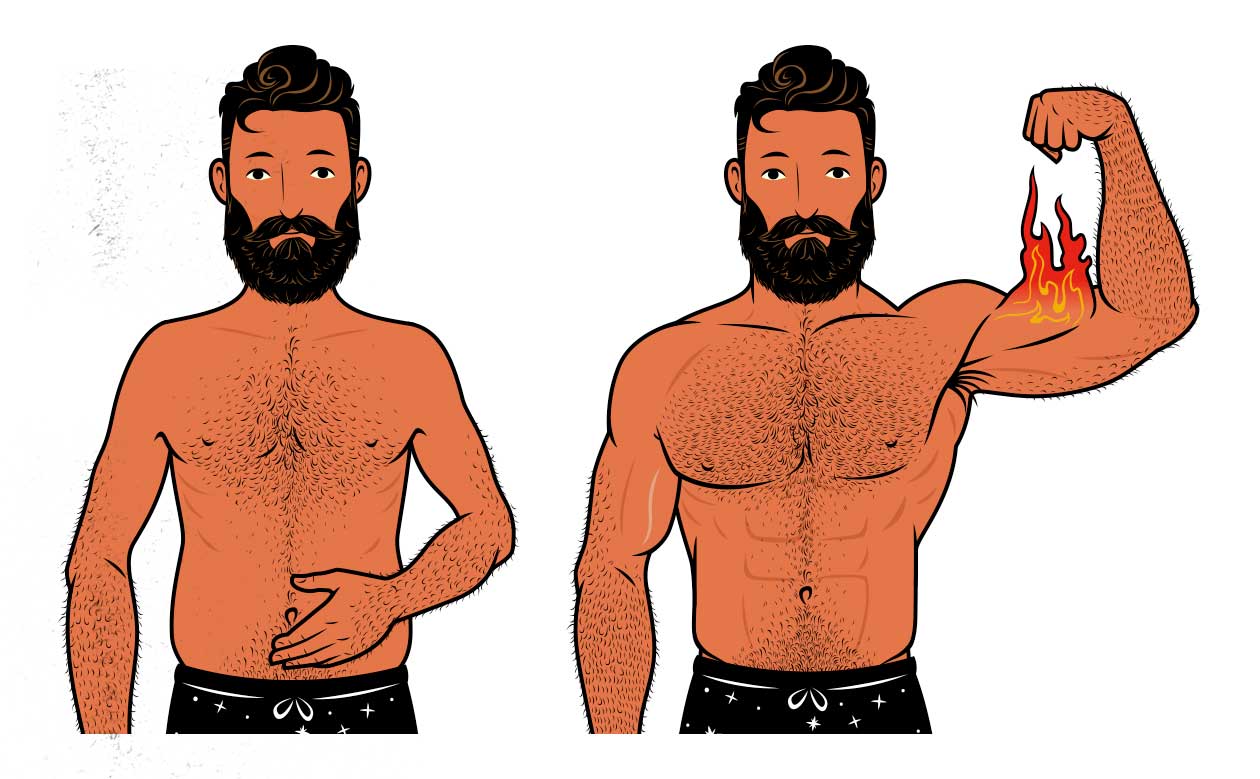
For example, you might want to start your workout by doing 4 sets of the close-grip bench press, following it up with 3 sets of skull crushers. Both exercises are done on the bench, making it a fast and convenient want to get your triceps training in.
Our muscles grow best when we train them at least twice per week, so maybe during another workout, you start with 4 sets of the overhead press followed by 3 sets of overhead extensions. Again, both lifts are done in the same area and in the same position, making it an efficient way to stimulate your triceps.
- Monday: 4×8 on the bench press + 3×15 of skull crushers
- Friday: 4×6 on the overhead press + 3×18 of overhead extensions

If you want a customizable workout program (and full guide) that builds in these principles, check out our Outlift Intermediate Bulking Program. Or, if you’re still skinny or skinny-fat, try our Bony to Beastly (men’s) program or Bony to Bombshell (women’s) program. If you liked this article, you’d love our full programs.



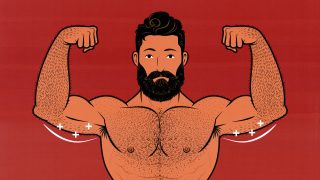
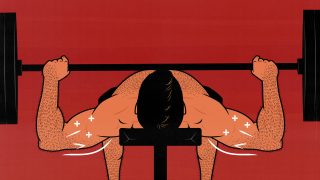
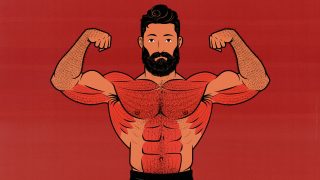
Hey Shane/Marco — great article, as always! I’ve got a couple of questions:
1. Where do diamond/close-grip pushups fall into this? I assume it’s in the “big compound pressing” camp, but I’ve also heard it’s one of the best triceps exercises. (I also read on some random article that it works all three heads… can that be true?) Just curious whether to consider it an “isolation” lift or not, mostly…
2. I did overhead extensions for a good year and a half, then recently (a couple months ago) they started causing me pain. The only thing that changed is I slowly worked up to bigger weight. Does that make sense? Seemed very sudden and strange. After that, I went a few weeks doing NO direct triceps work (even pushups hurt), then the pain settled down. The bizarre thing is, now I can do skull crushers fine, but overhead extensions still cause my elbows strife (even at lower weights). They seem like such similar motions, too!
I’m mostly fine doing skull crushers forever, but am curious how “normal” my situation is. Also whether I’ll ever be able to do overhead extensions again! 😀
Hey KTF, thank you!
1. Diamond push-ups, like the close-grip bench press and JM press, do work the triceps quite well, but since these are pressing movements, you’ll get some interference from the movement at the shoulder joint. Will that totally cancel out the involvement of the long head entirely? No. But they don’t tend to be very good for the long head when compared against triceps extensions. With that said, the only research I’ve seen is on the bench press vs triceps extensions. Logically, though, it would make sense if the other pressing movements had the same issue for the same reason.
2. Pushdowns seem to be the easiest on the triceps and almost everyone can do them without issue, skull crushers are the middle ground and most people can do them without issue, and overhead extensions are really hit and miss. With all of these variations, though, it can really help to warm up with compound pressing movements first and then lift in fairly high rep ranges. You might want to fiddle with your grip, too, trying a different angle or using a false grip.
The good news is that skull crushers and overhead extensions ARE similar movements. If you can’t do overhead extensions, just stick with skull crushers for a while. Your triceps will still grow great 🙂
Will you ever be able to do overhead extensions again? Probably! But you don’t need to. They aren’t an essential lift, and it’s common for them to cause problems. Might be better to stick with lifts that suit you better. But play it by ear.
Thank you sir, for the detailed response! Glad to know I’m not necessarily missing out even with my newfound trick elbows 😀
Also thanks for setting me straight re: close-grip pushups… it makes sense to use them more as a complement to skull crushers, then, rather than an alternative to them.
My pleasure, man!
The best tricep exercise I found, or at least the one that gives me soreness the next day, is the dumbbell skullcrusher w/ a neutral grip. 10-15 reps for 3 sets after the bench press. It has the added benefit of simulating the forearms.
Totally! That’s the perfect way of doing it 🙂
Great article!
I just did barbell skullcrushers for the first time in over a year with my new barbell home gym, and the long heads got insanely sore. I’m the opposite of Ryan, where I find that I get a better stimulus from a barbell rather than dumbbells. I had been doing dumbbell skullcrushers before but just wasn’t able to target the long head as well as I can with a barbell. Goes to show how important isolation exercises are for the arms, which leads to my question:
Why do so many fitness influencers on Youtube still insist that you don’t need arm isolation exercises, and that compound lifts are responsible for 90%+ of all arm growth, when that clearly isn’t true? As you have demonstrated in many of your articles, the empirical research shows that compound lifts can maybe account for 50% of the growth in your biceps and triceps. In addition, biomechanically we know that long head of our triceps cannot engage fully in the bench press, and our biceps cannot fully engage at all in chin-ups and rows. And yet, this talking point still persists, even amongst some scientifically-minded Youtubers. Why does this idea still have so much acceptance?
Thank you, Sam 😀
To be fair to people who argue against the importance of isolation lifts, most studies are small enough that they lack the statistical power to conclude that there’s a benefit to them. It’s only when you get a meta-analysis that combines the results from all of them that the fairly large benefit becomes provable. Plus, there was one lab that was publishing fake results showing that isolation lifts don’t help at all. Their data had anomalies, they got caught, and the studies were retracted… but that was fairly recent—just a few months ago. So at the moment, it’s not totally crazy to think that adding isolation lifts to compound lifts isn’t that important. I think it’s fairly clear that it’s wrong, but it’s not crazy.
The biomechanical argument is a good one, I think. It makes logical sense that, biomechanically, the arms need isolation lifts. But biomechanical arguments don’t always pan out. And it seems like a lot of people just don’t think of it. It’s not something I hear many people talking about.
With that said, I’m pretty sure the more popular “evidence-based” channels, whether that’s Jeff Nippard, Jeremy Ethier, Omar Isuf, or Renaissance Periodization, they talk about the importance of isolation lifts. Who are the YouTubers saying that isolation lifts don’t matter?
I like Conor McGregor’s triceps. Can you tell which part of his triceps is bigger?
Everyone has different muscle insertions and shapes. We can build our muscles bigger, we can stimulate growth in all the different heads and regions, and we can get them leaner, but we still have different muscle insertions and shapes. It’s usually not a good idea to look at someone else’s muscle shapes and try to imitate them. It probably won’t work. The best approach is just to fully develop your own muscles. In this case, with a mix of pressing and triceps extensions.
The good news is that Conor McGregor’s triceps aren’t huge and his bodybuilding genetics aren’t extreme. You can build triceps that look as big and as cool.
What is the best way to build your chest?
I train chest twice or even 3 times a week using workouts a mix of workouts such as: Flat bench dumbell/barbell bench press, Incline smith machine/dumbell chest press, seated chest press, chest flys and now and again I add push ups to my routine but I’m not seeing add my progress with the size of my chest. Any advice on how to change my workout to help grow my chest and see results.
“it’s a bit harder to use heavier rep ranges with dumbbells. That’s why we’ve bumped up the rep ranges a little bit.” I don’t quite understand this statement Shane.
Here are a few common examples:
Squats: doing a 3-rep set of barbell squats is as simple as loading up a barbell with however much weight you need, even if that’s 300+ pounds. Doing a 3-rep set of dumbbell squats can mean using incredibly heavy dumbbells. Sometimes two of them. And those dumbbells can be hard to get into position and keep there.
Bench press (and overhead press): The barbell starts on the pins. It’s easy to unrack and bring it into the starting position. I’ve done it by myself when doing a 315 1RM. With a dumbbell, you need to start with the dumbbells on your knees, rock back, and press the dumbbells up into the starting position. That’s hard when you’re lifting close to your 1-rep max. It’s especially hard for taller guys with long arms. Much easier to get the dumbbells into position when the weights are relatively light for you. (As in, light enough to do 8+ reps with.)
Deadlifts: The heavier the weight is, the harder it is on your grip. With a barbell, you can use a mixed grip, a hook grip, or lifting straps/grips, and the barbell helps to keep everything stable. With dumbbells, you can still use straps/grips, but it’s harder to lug super heavy dumbbells around. In a moderate rep range, the dumbbells are easier to move around and hold onto.
Some great examples. So shouldn’t the first statement be “it’s a bit harder to use heavier WEIGHTS with dumbbells” ? My apologies for nitpicking.
I’m not grasping the nuance here. You’d use heavier weights in a heavier rep range, doing fewer reps per set. Am I missing something?
Ah ok it’s like that. ‘Heavier rep range’ gives the impression of higher reps as opposed to fewer reps, atleast to me. Others might be different. Thanks for clarifying though
Oh, I haven’t heard that before. I can try to be clearer. I’m sorry for the confusion.
No worries brother. All cool. A bit off topic but have you enabled ads on the articles here at Outlift and b2B ?
We’ve got pretty heavy ads on Outlift (because that’s what Mediavine demands from a website of our size).
We don’t run any ads on Bony to Beastly. It funds itself with the programs and coaching.
I don’t see any ads either on b2B or Outlift. There’s just a grayish box with 3 dots loading icon. It’s not a browser problem because I see ads on all other sites. You’re missing out on some ad revenue mate.
Huh, that’s interesting. What country are you in?
India
I wonder if there’s an issue with serving ads to India right now. I can check.
Thank you for letting me know, by the way. I really appreciate that.